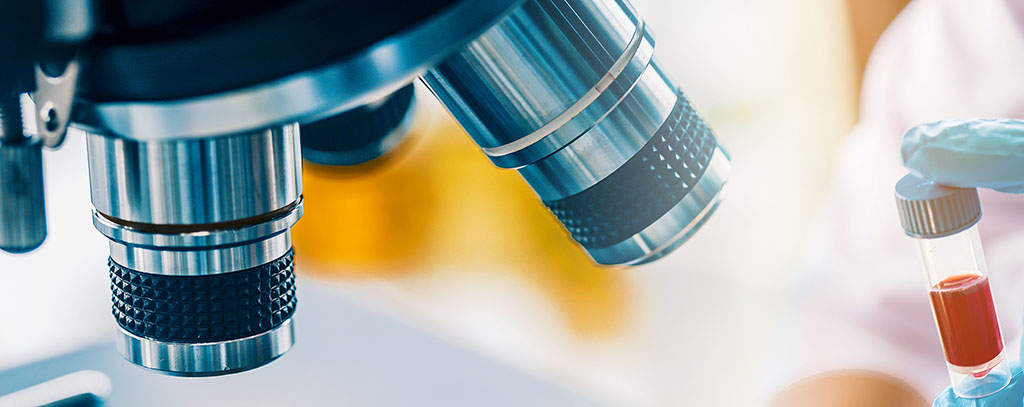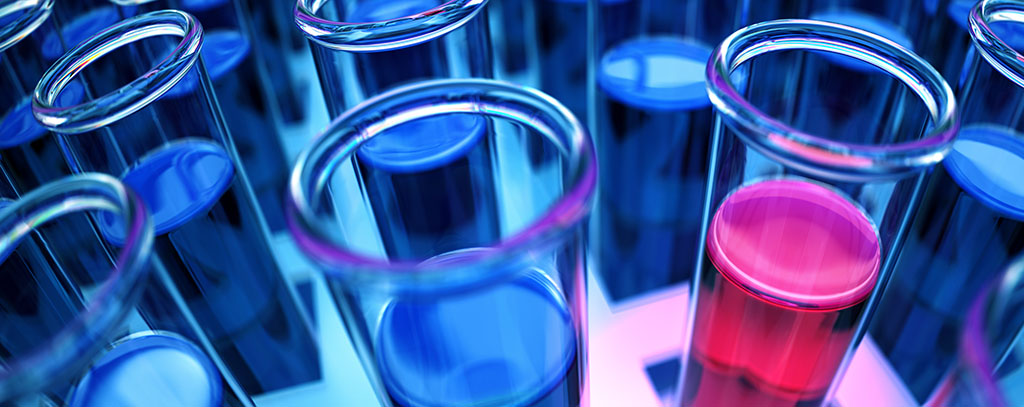


How Much is a 10 Panel Drug Test? Comprehensive Guide
April 18, 2023


What Does a 7 Panel Drug Test Test For? Comprehensive Guide
April 19, 2023An 8 panel drug test with ETG is a comprehensive screening tool used by companies to ensure a drug-free workplace. This advanced testing method not only detects common drugs of abuse but also includes the detection of alcohol consumption through the presence of ethyl glucuronide (ETG). In this blog post, we will delve into the details and benefits of using an 8 panel drug test with ETG for your company's drug testing needs.
Throughout this article, you'll gain insights on what exactly an 8 panel drug test entails and how it differs from other tests due to the inclusion of ETG. We'll explore the exactness, dependability, cost-effectiveness and time-saving benefits of this specific test that make it stand out among its competitors.
In addition to understanding its advantages, we will guide you through proper administration procedures for collecting samples and processing results accurately. Furthermore, we aim to dispel common misconceptions surrounding false positives/negatives as well as comparing different types of tests available. Lastly, we provide recommendations on where to purchase high-quality 8 panel drug tests with ETG for your business needs.
Table of contents
- The Importance of Drug Testing in the Workplace
- Addressing Rising Concerns Surrounding Substance Abuse During Challenging Times
- Maintaining Workplace Safety Through Proactive Measures
- Understanding 8-Panel Urine Drug Tests with EtG
- Cut-off Levels and Window of Detection Explained
- The Role of Medical Review Officers (MROs)
- Quick and Accurate Assessment of Potential Risks within the Workforce
- The Benefits of Point-of-Care Testing Options
- Frequently Asked Questions 8 Panel Drug Test With Etg
- Conclusion
The Importance of Drug Testing in the Workplace
With the ongoing pandemic leading to a significant increase in drug use and overdose-related injuries and fatalities across Canada, employers may want to consider implementing comprehensive drug testing programs. These can ensure workplace safety and productivity by detecting substance abuse among employees using methods such as 8-panel urine drug tests with Ethyl Glucuronide (EtG).
Addressing Rising Concerns Surrounding Substance Abuse During Challenging Times
In recent years, there has been an expanding worry about the effects of substance abuse on worker wellbeing, safety, and general job execution. This issue has only been exacerbated by the stressors brought on by COVID-19. By implementing regular drug testing measures within their organizations, companies can proactively address these concerns while fostering a safe work environment for all.
Maintaining Workplace Safety Through Proactive Measures
- Routine screening: Conducting random or scheduled drug tests helps identify potential issues before they escalate into more serious problems that could jeopardize both individual well-being and company success.
- Pre-employment checks: Implementing pre-employment drug screenings allows businesses to make informed hiring decisions based on candidates' suitability for specific roles where sobriety is crucial.
- Educational initiatives: Providing resources and support services related to addiction prevention encourages open dialogue between management teams and staff members regarding mental health challenges that may contribute to substance misuse.
- Fostering accountability: A consistent approach towards enforcing company policies surrounding illicit substances demonstrates an employer's commitment towards maintaining high standards of professionalism throughout their workforce.
By integrating comprehensive drug testing programs into their workplace safety protocols, companies can take a proactive approach towards addressing the issue of substance abuse among employees. By implementing such measures, employers demonstrate their dedication to both the safety and success of their employees.
Drug testing is an important tool for employers to ensure the safety of their workplace, and understanding 8-panel urine drug tests with EtG can provide more insight into how these tests work. By exploring immunoassay techniques used in detection, employers are able to gain a better grasp on what type of test may be best suited for their needs.
Understanding 8-Panel Urine Drug Tests with EtG
An 8-panel urine drug test with Ethyl Glucuronide (EtG) is an effective method for identifying multiple drugs of abuse simultaneously. These tests are available as either lab-based or point-of-care tests (POCT), allowing employers to choose the most suitable option for their needs. By utilizing immunoassay techniques, these tests analyze collected urine samples to detect specific substances within them.
Lab-based vs POCT options for employers
Lab-based testing: In this type of testing, collected urine samples are sent to a laboratory where trained technicians perform the analysis using advanced equipment and methods. Lab-based testing provides highly accurate results but may take longer due to shipping and processing times.
Point-of-Care Testing (POCT): With POCT, the analysis takes place on-site or at a nearby location, providing faster results compared to lab-based testing. Although slightly less accurate than lab tests, POCT still offers reliable detection of drug use in employees.
Immunoassay techniques used in detection
The primary technique employed in both lab-based and POCT options is called immunoassay. This method involves using antibodies that bind specifically to targeted drugs or their metabolites present in the urine sample. The presence of these complexes indicates a positive result for substance use.
- Enzyme-linked immunosorbent assay (ELISA): ELISA is a widely used immunoassay technique that involves attaching enzymes to antibodies, which then bind to the target substance. A color change occurs when the enzyme reacts with a substrate, indicating a positive result.
- Radioimmunoassay (RIA): In RIA, radioactive isotopes are attached to antibodies instead of enzymes. The level of radioactivity detected in the sample correlates with the concentration of the targeted drug or metabolite.
Both lab-based and POCT 8-panel urine drug tests with EtG provide employers an effective way to detect substance abuse among their workforce. By understanding these testing options and techniques, companies can make informed decisions about implementing comprehensive drug testing programs for maintaining workplace safety and productivity.
Understanding 8-Panel Urine Drug Tests with EtG is a critical component of an employer's drug testing program. With this knowledge, employers can confidently make decisions regarding cut-off levels and windows of detection to ensure the accuracy of their results. Let's delve into the specifics of how to determine cut-off levels and detection windows for substances like Tetrahydrocannabinol (THC).
Cut-off Levels and Window of Detection Explained
Cut-off levels and window of detection are two essential factors to consider when implementing drug testing programs. Understanding these concepts is vital for employers looking to implement comprehensive drug testing programs within their organizations.
Tetrahydrocannabinol (THC) Example Illustrating Windows of Detection
The cut-off level refers to the minimum amount of a specific substance that must be present in a sample for it to be detected by the test. Most tests set the cut-off level for THC at 50 ng/mL, which must be present in a sample to detect its presence. This means that if THC concentration is below this threshold, the result will likely come back as negative.
The window of detection pertains to how long after consumption a substance remains detectable within an individual's system. The length varies depending on several factors such as frequency and quantity consumed, metabolism rate, and type of drug used. In general terms:
- Marijuana (THC): 1-30 days after use
- Opiates: 1-4 days after use
- Amphetamines: 1-3 days after use
- Benzodiazepines: up to several weeks or more depending on usage patterns
Oral Fluid Testing Alternative Offering Shorter Windows
In addition to urine-based tests like the 8-panel drug test with EtG mentioned earlier, oral fluid testing offers an alternative method for detecting substance abuse. Oral fluid tests typically have shorter windows of detection, making them ideal for identifying recent drug use. For example, THC can be detected in oral fluids within 24-48 hours after consumption, whereas it may remain detectable in urine samples for up to 30 days or more.
Organizations wishing to introduce a comprehensive drug testing protocol should consider the strengths and drawbacks of each method when deciding which one is most suitable for their particular goals. To learn more about different types of drug tests available and how they can help ensure workplace safety and productivity, visit Halux Diagnostic.
Understanding the cut-off levels and window of detection is essential for companies that are looking to purchase drug testing supplies. Having the right information is critical for firms that are shopping around for drug testing materials, so they can make judicious choices on what suits them best. Moving forward, we will discuss SureHire's urine specimen collection protocol in detail.
The Role of Medical Review Officers (MROs)
Once specimens have been obtained and forwarded to a licensed laboratory for examination, the part of Medical Review Officers (MROs) is essential in deciphering the results. MROs are licensed physicians with specialized training in substance abuse detection and treatment who review lab findings to ensure accuracy and compliance with applicable regulations. They also provide expert guidance on any necessary follow-up actions, such as further testing or employee assistance programs.
Quick and Accurate Assessment of Potential Risks within the Workforce
This innovative product enables companies to quickly assess potential risks within their workforce by detecting multiple drugs of abuse simultaneously. The Healgen's 8-panel drug test dip card screens for:
- Marijuana (THC)
- Cocaine (COC)
- Opiates (OPI)
- Methamphetamine (MET)
- Amphetamine (AMP)
- Benzodiazepines (BZO)
- Oxycodone(OXY)
Additionally, this advanced technology also includes Ethyl Glucuronide testing for alcohol consumption detection.
Optional SAMHSA Lab GC/MS Confirmation for Added Assurance
In cases where further confirmation may be necessary or desired, employers have the option to send samples collected using Healgen's 8-panel drug test dip card to a Substance Abuse and Mental Health Services Administration (SAMHSA) certified laboratory for Gas Chromatography/Mass Spectrometry (GC/MS) confirmation. Providing further assurance, this additional measure guarantees the validity and dependability of the outcomes.
Overall, Healgen's 8-panel drug test dip card including Alcohol (EtG) is a valuable tool for employers looking to maintain workplace safety and productivity by detecting substance abuse among employees in a fast, cost-effective manner.
Healgen's 8-Panel Drug Test Dip Card Including Alcohol (EtG) is an effective and cost-efficient way to quickly assess potential risks within the workforce. Moving on, let us explore the benefits of point-of-care testing options for further assurance in decision making.
The Benefits of Point-of-Care Testing Options
Employers can benefit from point-of-care testing options like Healgen's 8-panel drug test dip card due to their ability to deliver quick results at lower costs compared to traditional laboratory tests. This allows companies to quickly assess potential risks within their workforce while taking appropriate action based on expert recommendations from Medical Review Officers.
Lower Costs Compared to Traditional Lab Tests
One of the main advantages of using point-of-care testing (POCT) options for drug testing, such as Healgen's 8-panel drug test dip card, is that they are generally more cost-effective than sending samples offsite for analysis in a lab. With POCT, employers can avoid expensive lab fees and reduce overall expenses associated with workplace drug screening programs.
Fast Turnaround Times for Informed Decision-Making
In addition to being more affordable, POCT also offers faster turnaround times when it comes to obtaining results. While traditional lab-based tests may take several days or even weeks before providing an outcome, POCT devices like Healgen's 8-panel drug test dip card can produce accurate results in as little as five minutes. This enables employers and HR professionals alike not only save time but also make informed decisions regarding employee safety and productivity without delay.
- Improved efficiency: By eliminating the need for sample transportation and processing in a separate facility, POCT streamlines the entire process of conducting workplace drug screenings.
- Reduced risk of sample tampering: Since the tests are performed on-site, there is less opportunity for samples to be altered or contaminated during transit.
- Enhanced employee privacy: POCT allows for a more discreet testing process, as results can be obtained and reviewed by designated personnel without involving external parties.
In conclusion, point-of-care testing options like Healgen's 8-panel drug test dip card offer numerous benefits over traditional lab-based methods. By providing accurate results quickly and cost-effectively, employers can maintain workplace safety while making informed decisions about their workforce based on expert recommendations from Medical Review Officers.
Frequently Asked Questions 8 Panel Drug Test With Etg
What is an 8-panel drug test with EtG?
An 8-panel drug test with EtG is a comprehensive urine screening that detects the presence of eight commonly abused substances, including alcohol. The test includes Ethyl Glucuronide (EtG), a biomarker for recent alcohol consumption, along with other drugs such as THC, cocaine, opiates, amphetamines, methamphetamines, benzodiazepines and phencyclidine.
How long can EtG alcohol be detected in urine?
EtG alcohol can be detected in urine for up to 80 hours after the last drink. However, detection times may vary depending on factors like individual metabolism rates and the amount of alcohol consumed. It's important to note that this window provides an estimate and should not be considered absolute.
Is alcohol on an 8-panel drug test?
Yes, when using an 8-panel drug test that includes EtG testing specifically designed to detect ethyl glucuronide (a metabolite produced by the body after consuming ethanol). This allows employers or medical professionals to identify recent use of alcoholic beverages alongside other common drugs of abuse.
How do you reduce EtG in urine?
Reducing EtG levels in urine isn't recommended since it involves tampering with results. However, naturally eliminating it from your system requires time for your body to metabolize and excrete it through normal processes like urination. Staying hydrated may help expedite this process but won't guarantee significantly lower levels within short periods.
Conclusion
Overall, an 8 panel drug test with ETG is a highly accurate and reliable method for testing individuals for multiple drugs of abuse as well as alcohol consumption. By combining the benefits of both an 8 panel drug test and ETG testing, companies can save time and money while ensuring that their employees are not engaging in risky behaviors.
If you're interested in purchasing high-quality drug testing supplies, including 8 panel drug tests with ETG, check out Halux Diagnostic. Halux Diagnostic offers a comprehensive range of drug testing products and reliable customer service, making it the ideal choice for your requirements.





